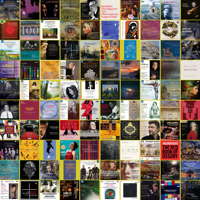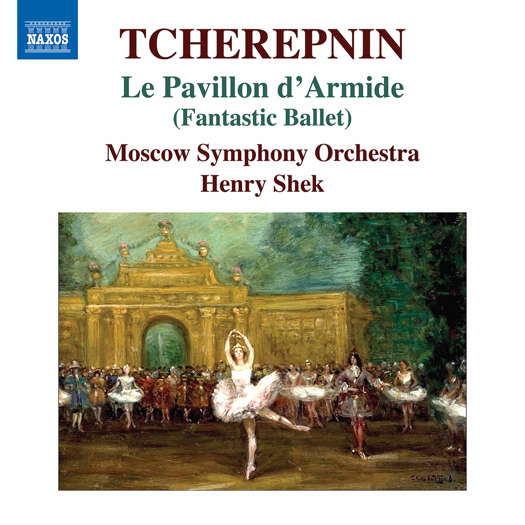 UPDATES: There's a new feature every day at Classical Music Daily. Read about the various ways we can keep in touch with you about what's happening here.
UPDATES: There's a new feature every day at Classical Music Daily. Read about the various ways we can keep in touch with you about what's happening here.

In Grand Style
Ballet music by Tcherepnin, enjoyed by GEOFF PEARCE
'The Moscow Symphony Orchestra, under the baton of Henry Shek, performs this music ... with all the passion and commitment such a score requires.'
For those of you who like their music along the traditional romantic style of Rimsky Korsakov, this work by one of his pre-eminent students, Nikolai Tcherepnin (1873-1945), will fit the bill nicely. The music is colourful and very well crafted in that late Russian tradition and was written for the Ballets Russes. The synopsis and notes are contained in the attached booklet.
The introduction and first scene of the ballet starts off with a drum roll and sweeping melodies are soon introduced. It builds in a grand manner before subsiding. This is the visiting Count looking at a rather magnificent tapestry in which a portrait of a beautiful young woman is enclosed. She bore a striking resemblance to the young lady of the chateau, to whom he was betrothed. A bed is made for him to retire to in the pavilion. Musically, I find the style owes much to Tchaikovsky.
Listen — Tcherepnin: L'introduction et scene premiere (Le Pavillon d'Armide)
(track 1, 5:40-6:17) ℗ 1995 Naxos Rights US Inc :
In the moonlit pavilion, twelve boys come out and perform the 'Dance of the Hours' before retiring. It is described as a courante and is a charming light brief dance.
Listen — Tcherepnin: Danse des heures (Le Pavillon d'Armide)
(track 2, 1:42-2:28) ℗ 1995 Naxos Rights US Inc :
A rather mysterious movement is next, and the characters in the tapestry are gradually animated, at first rather terrifying the Count. The background appears now as a grand palace and in the garden, Armide and her entourage appear.
Listen — Tcherepnin: La scene d'animation du Gobelin (Le Pavillon d'Armide)
(track 3, 2:37-3:18) ℗ 1995 Naxos Rights US Inc :
In the next scene, Armide mourns the absence of a beloved knight. The music is wistful and nostalgic. The tread is heavy and solemn.
Listen — Tcherepnin: La plainte d'Armide (Le Pavillon d'Armide)
(track 4, 1:08-1:43) ℗ 1995 Naxos Rights US Inc :
This is followed by a livelier and warmer 'Scene Grand pas d'action' It is quite a varied scene, with some grand moments, wistfulness and tenderness.
This is followed by a Grande valse noble. After a brief introduction, the main waltz starts and gradually builds in power. I am more than ever reminded of Tchaikovsky rather than the music that I know of Rimsky Korsakov. This is not to say that the younger composer is derivative, but the influences are strong.
Listen — Tcherepnin: Grande valse noble (Le Pavillon d'Armide)
(track 6, 3:35-4:12) ℗ 1995 Naxos Rights US Inc :
This is followed by 'Variation' which appears to be a collection of contrasting dances. It ends with a solemn call to attention.
This followed by a delightful lively but light 'Dance of the Boys (Little Ethiopian slaves)'
A slow waltz by Armide's ladies is next, and, true to so many waltzes, is both tender and somewhat sad, at the same time.
Bacchus crashes the party (as he is often want to do) and a rather savage and grotesque Bacchanale follows. This is one of the most interesting moments in the ballet as the composer loosens his restraints.
Listen — Tcherepnin: Bacchus et les bacchantes (Le Pavillon d'Armide)
(track 10, 2:14-3:01) ℗ 1995 Naxos Rights US Inc :
The dramatic 'Entry of the Magicians' follows, and this turns into 'The Dance of the Shades' in which ghosts appear, dance and then disappear at the wave of a wand.
A lively and happy 'Dance of the Clowns' is next. At times tender and funny and gay, and at others a little menacing, this is a colourful scene.
Listen — Tcherepnin: Danse des bouffons (Le Pavillon d'Armide)
(track 12, 2:20-3:05) ℗ 1995 Naxos Rights US Inc :
A little rather mysterious 'Scarf Dance' follows, after which there is a 'Pas de Deux' It starts with a somewhat grand introduction and then settles down into something more languid before having a rather grand ending.
The final scene is a Grande Valse. After a somewhat grand opening, the music at times, tender, and at others, more impassioned, ends in a grand climax.
The Moscow Symphony Orchestra, under the baton of Henry Shek, performs this music in grand style. It is a part of their blood and they play with all the passion and commitment such a score requires. The sound the different sections of the orchestra make is different from most other European and American orchestras in the fact that the instruments are more differentiated in their sound palates. In my opinion, this adds a lot of colour to the performance that would otherwise be less noticeable, and I enjoyed the recording very much for this reason.
This is a work not so often performed and I am pleased, as I am sure that most listeners, especially those who love ballet music, will enjoy it.
Copyright © 18 February 2021
Geoff Pearce,
Sydney, Australia

CD INFORMATION - TCHEREPNIN: LE PAVILLON D'ARMIDE
FURTHER CLASSICAL MUSIC ARTICLES ABOUT RUSSIA



